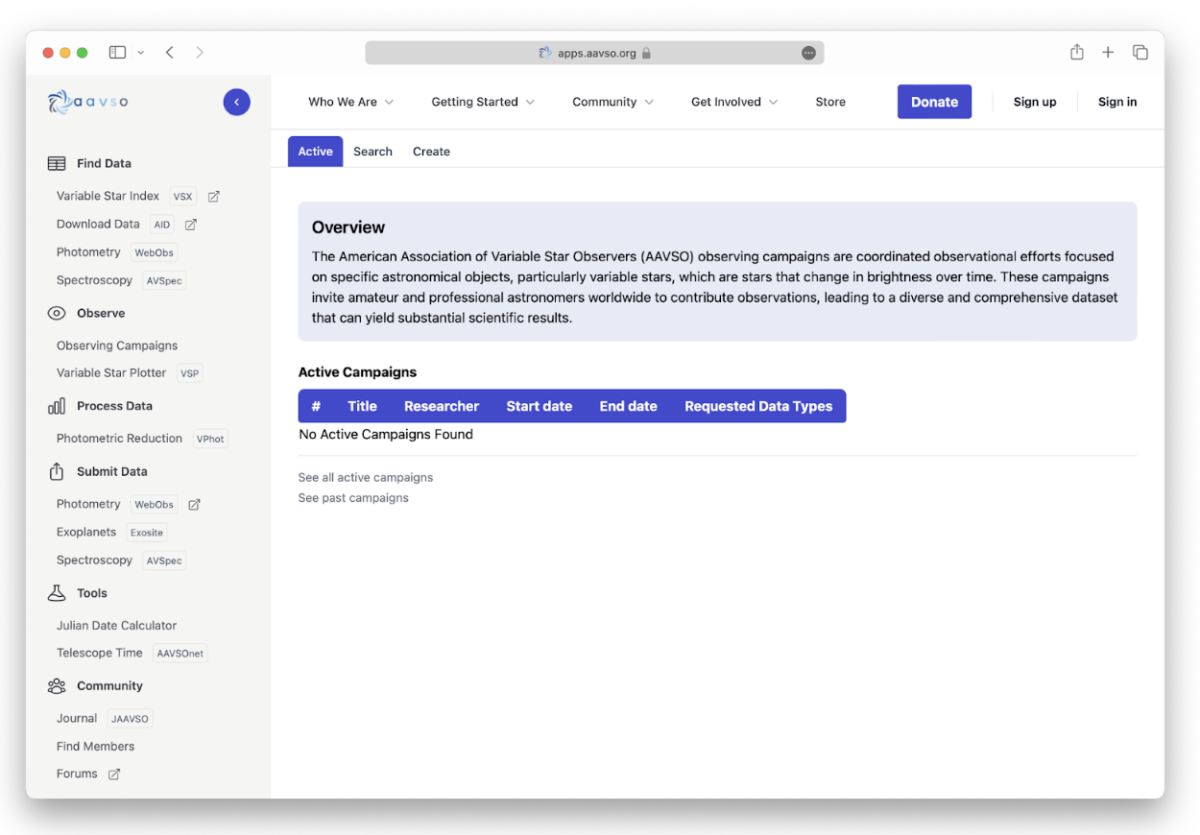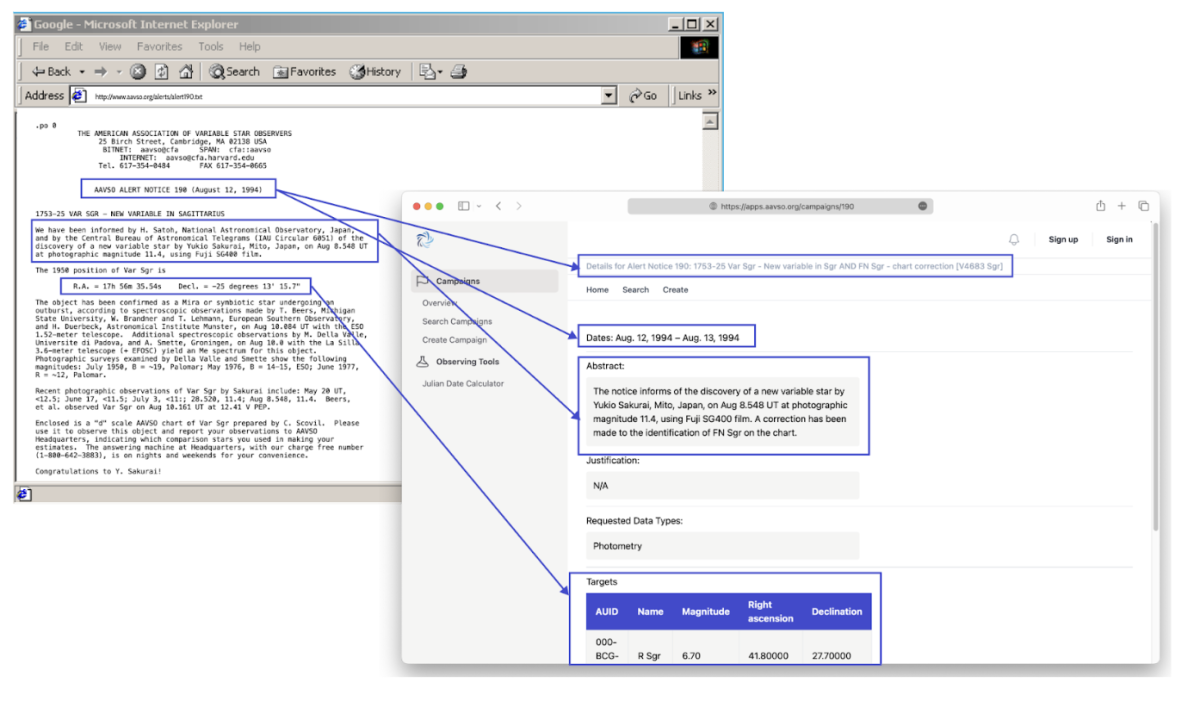
Over the past several months, the AAVSO has made significant infrastructure improvements. We are excited to roll these out to our users in the coming weeks. These changes were enabled by the 2024 Annual Campaign. | By Aru Bhoop
Observing Campaign Application
Since the 1990’s, we’ve published over 600 Observing Campaigns, or requests from researchers to monitor particular stars. The new Observing Campaigns application allows observers to filter campaigns by targets, researcher, or star class, making it easier to find suitable campaigns in which to participate. In the future, we plan to integrate this with the Target Tool. Researchers can now easily create campaigns and provide targets, spectroscopy line lists, and other information. To migrate our existing campaigns, we used artificial intelligence to extract key information from text documents, such as the “abstract” and “targets,” which was then converted into a structured database format. This technique saved our staff weeks of manual labor.

The 1994 notice on current website (left) and new application (right).
Application Dashboard
One of the new features is a dashboard which will house our scientific applications. The navigation menu at the top allows easy access to any part of our site, and the collapsible sidebar on the left features our primary applications, including VSX, WebObs, and the AID. The bolder color scheme and other interface improvements will be extended to other parts of our website later this year. These updates will make the site more visually appealing, accessible to people with disabilities, and navigable, especially to new members.

Infrastructure Updates
Behind the scenes, we’ve transitioned our existing large servers into scalable compute instances or containers. These smaller units efficiently scale up and down to match resource demands, leading to a faster user experience. This distributed model is also more fault-tolerant and resistant to server outages. This new system is expected to reduce our annual computing costs by 20%.
Other updates include a redesigned Julian Date Converter and improved usability by individuals with disabilities. In case you’ve missed it, we replaced our existing authentication system earlier this year, so please make sure you’ve migrated your account to the new system. With these changes, we reflect our commitment to improving our technological infrastructure. We would like to thank our members for their support for making this possible.

